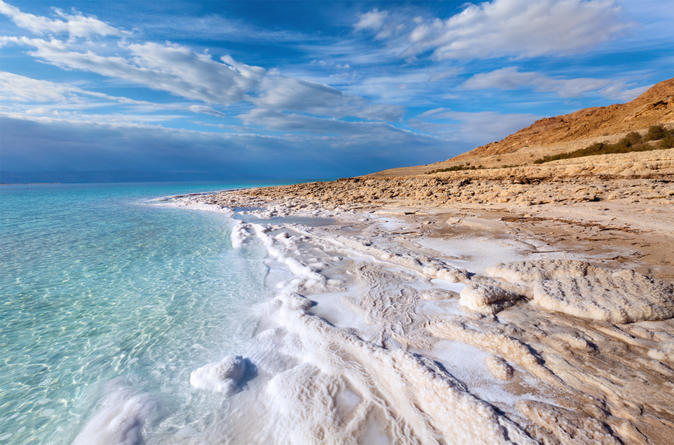Israel’s Scenic Routes: Explore the Dead Sea Highway

Heading to the Dead Sea for vacation? Don’t just focus on the famous salty lake, although it is spectacular. Enjoy the expansive road that brings you to one of Israel’s most toured regions, and plan a scenic tour on our favorite stretch of Route 90.
Known as “the lowest road in the world,” the Dead Sea Highway is also notable for its stunning scenery and the dense grouping of natural and man-made attractions that line it. Think of it as the equivalent of the U.S. Coastal Highway on the West Coast. The juxtaposition of the Dead Sea shoreline on one side of the road and the stark desert on the other makes for a road that is truly unique.
While the drive is definitely worth making, we offer two small caveats: be prepared for the strong smell of sulfur in the air, from the extremely salty Dead Sea waters, and also be prepared for tightened security, including requests to view your passport. While the Dead Sea Highway does not pass through any disputed areas, it lies in close proximity to Israeli and Palestinian territories, so police checks aren’t uncommon. But these minor annoyances are more than offset by the unusual scenery and the wealth of natural and manmade attractions in the span of the highway.
Location
Israel’s Route 90 runs the entire length of the country, from the Kiryat Shemona to Eilat. The 62-mile stretch (less than one fourth of the total route) which runs along the western edge of the Dead Sea is the most scenic part of the route and is known as the Dead Sea Highway. The road runs north and south for its full length.
Sights to See
While there are more places to stop than we can list, we thought we’d concentrate on our top four attractions:
The Dead Sea. Let’s start with the obvious: the world’s lowest and saltiest body of water. The Dead Sea is a popular tourist destination for many reasons. Some visitors enjoy luxuriating in one of its elegant resorts. Others come for the reputed healing properties of its waters. Whatever your reason for being in the area, take some time to float in the Dead Sea’s buoyant waters or have a relaxing spa treatment.
Masada. This ancient mountaintop fortress has historical value as the scene of the last resistance of Jewish Zealots to invading Romans centuries ago. The massive ruins of the fortress lie atop a 1,300-foot mountain peak. You can hike the rugged Snake Path to the top, or have fun taking the cable car up and down the mountain. Masada is a designated UNESCO World Heritage Site. In addition to a slice of history, visitors can enjoy evening light shows with all the pyrotechnics or tour ancient ruins, which include a synagogue and bathhouses.
Ein Gedi Nature Reserve. A desert oasis is home to one of the Middle East’s most lovely nature reserves. Its wildlife and native flora represent three climatic regions: tropical, Mediterranean, and desert. Flowing through the reserve, the David Stream creates a series of waterfalls and pools, amidst lush vegetation. You’ll spot such local wildlife as tristram starlings, rock hyrax, and the Nubian Ibex. A temple dating from the early Bronze Age is also located in the park.
Qumran National Park. On the northern shores of the Dead Sea, the oldest biblical documents ever found were discovered in the ancient caves at Qumran. Found by a Bedouin shepherd in 1947, the scrolls depict the daily lives of a Jewish sect, the Essenes, who fled Jerusalem over 2000 years ago. Learn more about the scrolls and see the settlement and caves in which they were found.
Enjoy your visit to one of Israel’s most fascinating regions by taking a leisurely drive down the famous Dead Sea Highway. If you would like further information on the area, please contact us today.

